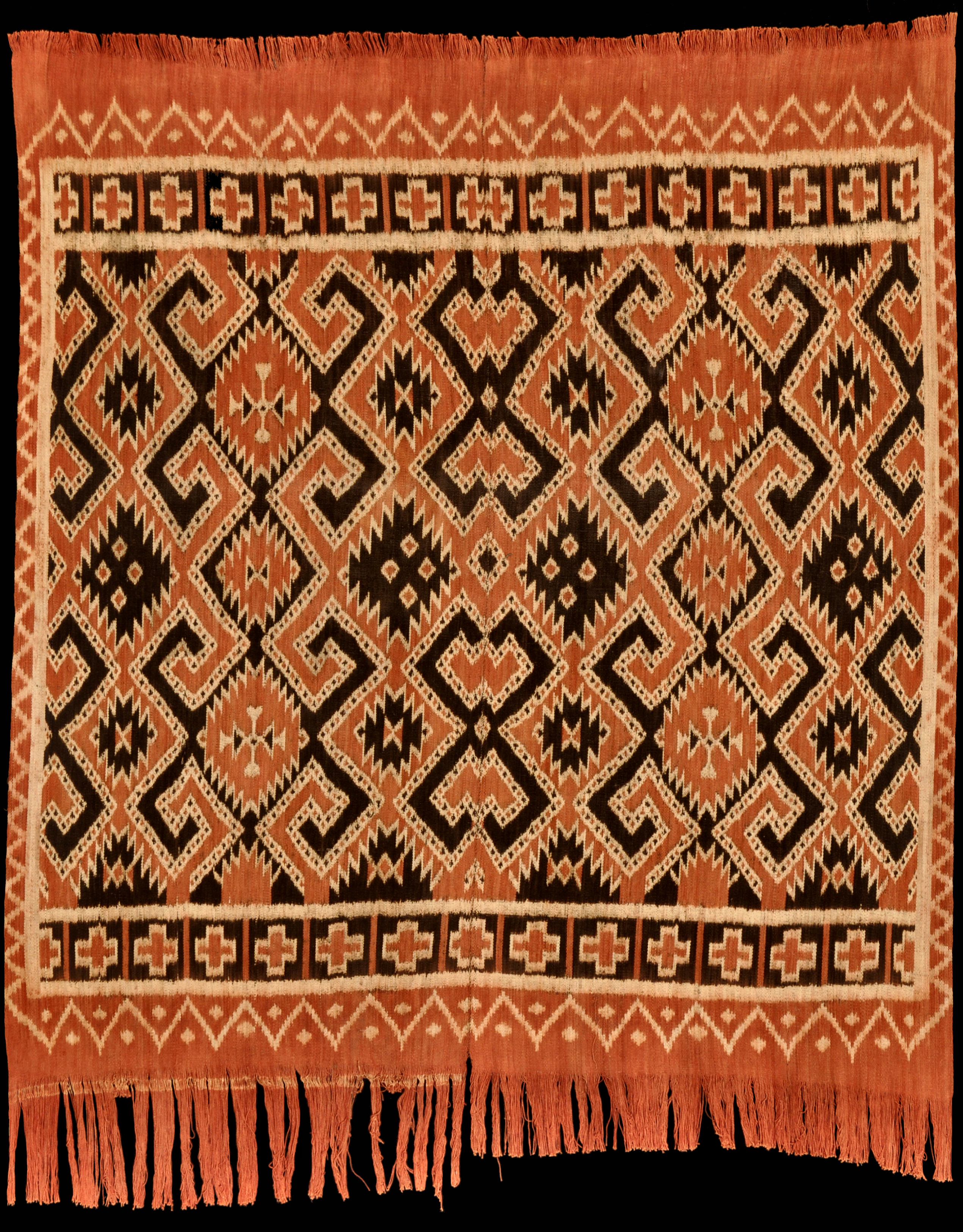| |
 mouse over to magnify mouse over to magnify
| | | | 064 Sulawesi, Toraja
Seko mandi (shroud)
| | Locale: | Seko village. Pa'tannunu. | | Period: | 1970s | | Panels: | 1 | | Design: | Primary motif, called sekong, is a repeat of interlocking hooks: a schematic representation of bodies with limbs turned inward, that symbolise the ancestors which the deceased is to join in the afterlife. | | Size: | 141 x 168 cm (55.5 x 66.1 in) | | Weight: | 995 g (420 g/m2) | | Yarn: | Cotton, hand-spun, coarse | | Comment: | Seko mandi, shroud, to be displayed at funeral, or to cover the coffin. According to Thomas Murray, the motif, resembling interlocking arms, may represent the way the deceased is embraced by ancestors in the hereafter. A so-called 'revival' piece made after the Torajan people returned to their lands after their flight from Muslims raiders from southern Sulawesi who entered 'heathen' villages to apply sharia law to non-believers. | | Background: | Additional information in chapters on Sulawesi and Toraja. | | Published: | Woven Languages, 2014. | | Compare: | 065 066 067 214 | | Sources: | Similar to seko mandi in National Museum of Ethnology, Minpaku, Japan, H200621, but with infinitely more intricate decoration and greater definition. | | |
 ©Peter ten Hoopen, 2025
All rights reserved.
|
|


